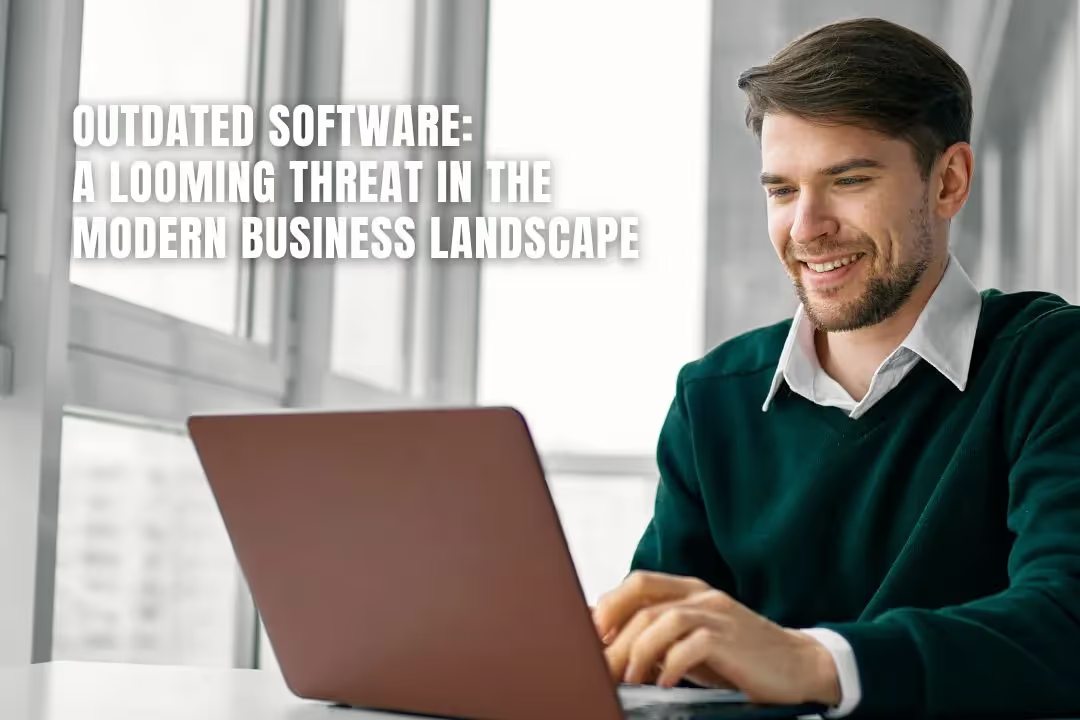
Editorial Disclaimer
This content is published for general information and editorial purposes only. It does not constitute financial, investment, or legal advice, nor should it be relied upon as such. Any mention of companies, platforms, or services does not imply endorsement or recommendation. We are not affiliated with, nor do we accept responsibility for, any third-party entities referenced. Financial markets and company circumstances can change rapidly. Readers should perform their own independent research and seek professional advice before making any financial or investment decisions.
In today's rapidly evolving digital landscape, staying at the forefront of technology is crucial for any business to succeed. However, many companies cling to outdated software, often citing concerns about cost, training, or potential disruption. While these hesitations are understandable, the security risks associated with outdated software far outweigh any perceived benefits.
Several factors contribute to businesses holding onto outdated software. Uncertainty regarding the most suitable and cost-effective upgrades can lead to decision paralysis. Additionally, the prospect of time-consuming employee training on new software can be daunting. Concerns about potential disruptions to workflows and performance can further delay the inevitable upgrade process.
Furthermore, overloaded IT departments often struggle to keep pace with the constant stream of updates and patches needed for outdated software. Finally, the initial cost of acquiring and implementing new technology can be a major barrier for many businesses.
While the initial cost of upgrading software might seem like a burden, the long-term consequences of clinging to outdated systems can be far more detrimental. Outdated software is inherently vulnerable to a multitude of security risks, putting your business data and operations at significant risk.
These risks include increased vulnerabilities to cyberattacks. Hackers are constantly looking for weaknesses to exploit, and outdated software, with its known security flaws and lack of security patches, provides an easy target. Leveraging obsolete programming languages and outdated security protocols creates an environment susceptible to bugs and corruption, further jeopardising data integrity.
Furthermore, outdated software is prone to unexpected failures, which can lead to data loss. This can not only disrupt operations but also result in significant financial losses due to the lost data and the cost of recovery. Additionally, outdated software often falls behind in terms of performance and compatibility with newer technologies. This can lead to inefficiencies and hinder initiatives to modernise operations and infrastructure.
Consider software and hardware upgrades as investments in your company's future. Newer software is not just about security; it can significantly improve efficiency, productivity, and competitiveness. IT support for real estate industry professionals, for example, can provide valuable guidance on navigating the ever-changing tech landscape and ensure your systems are optimised for the specific needs of the industry.
Developing a cloud-first approach offers a largely maintenance-free environment that facilitates scalability and easier collaboration. Additionally, maintaining and upgrading hardware components alongside software upgrades ensures optimal performance and minimises the risk of hardware-related failures.
Cybersecurity should also be a top priority. Utilising firewalls and antivirus software bolsters your defences against cyberattacks. However, considering the ever-growing complexity of cybersecurity threats, seeking help from experienced IT professionals is often a worthwhile investment.
Outdated software poses a significant threat to a company's security and overall operations. By acknowledging the risks and adopting a strategic approach to technology upgrades, businesses can create a more secure and efficient work environment, paving the way for long-term success. To learn more, check out the resource below.

In today's rapidly evolving digital landscape, staying at the forefront of technology is crucial for any business to succeed. However, many companies cling to outdated software, often citing concerns about cost, training, or potential disruption. While these hesitations are understandable, the security risks associated with outdated software far outweigh any perceived benefits.